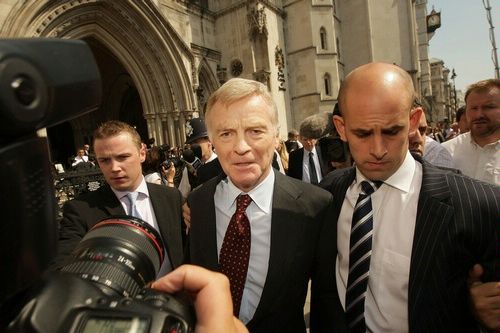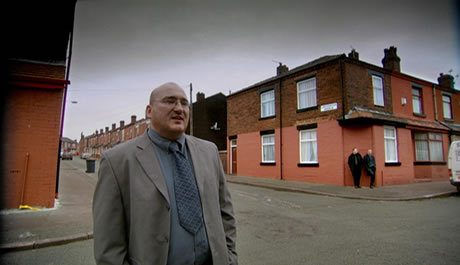
Demand for the precious metal is peaking throughout the world. From Europe to the USA, to Asia and India, Paris Match has conducted a survey on all fronts.
“Do you sell gold?” With a motorbike helmet in his hand, a twenty-eight year-old mechanic from Vélizy arrived in Paris, on Vivienne Street behind Bourse Square, with 2,000 Euros in his pocket. He prefers to buy gold rather than, “placing money in an unreliable savings account.” So he is, “Trying to catch people he sees leaving upmarket boutiques, who he thinks might be able to sell him some gold, hand-to-hand.” In the open markets in August, traders noticed a renewed interest in the yellow metal. Instead of tourists exchanging currency, they’ve been seeing no end of men and women of all ages and social classes, looking to buy gold and secure their savings.
Remarkably busy behind her counter, Karine says that, “Business is booming. People are getting frustrated in the queue! Others even try calling me from their holiday locations to carry out transactions.” And there are those who prefer to buy and sell online and by post. Nevertheless, the French taste for gold – they have the largest amount of gold in the world, weighing 3,500 tons – has lessened. Everything changed following the collapse of Lehman Brothers in 2008 and the economic crisis. Staffs at French credit and gold experts company CPoR explained that, “We saw a huge purchasing rise in April, at the time of the Greek crisis.” The French gold specialist said that since July 15th they had recorded a surge in gold handling activity of 50%. It needed the last financial crisis for gold to once again assume its role as a means of safe investment.
Fears of the Euro Zone exploding and of a return to recession, and the lowering of the USA’s credit rating…
So what brought about this change? The reasons are well-known: Fear of the Euro Zone collapsing as a result of its member nations’ national debts, fear of a return to recession in developed nations, inflationary pressure in emerging nations and – an significant trigger mechanism – Standard and Poor’s historic lowering of the USA’s credit rating. Gold lost its lustre in the 1980s to the benefit of the stock markets and housing market, and importantly in the summer of 1971, Richard Nixon announced that the US dollar could no longer be converted into gold. Until now, nothing had managed to send prices skywards. Not even the stock market crash in 1987, or the fall of the Berlin Wall, or the collapse of the USSR, or the September 11th attacks…
…And the price of gold shoots up
With an increase of 160% since October 2008, 20% of which occurring over the last three months, the price of an ounce of gold in New York is once again a good indication of the level of people’s fear. August saw another record broken, with gold reaching $1,816 per ounce. That equates to almost $60 for one gram of the highly sought after metal. Ten years ago this would have been unthinkable. Analysts would have assured us that capitalism would have to disappear, if gold were to be what we’d turn to as a last resort!
Investors, particularly the professionals, are rediscovering the precious metal. For the first time in thirty years, more gold has been sought out for investment than for jewellery. Lysu Paez-Cortez, a precious materials analyst at Natixis, says that, “The massive recent increases reflect a clear feeling of uncertainty, accentuated by the massive Russian financial movements and by the fears of global economic meltdown. In November 2010, the massive injection of liquid assets into the markets by the American Federal Reserve prompted investors to turn to gold.”
Investors everywhere are trading life insurance plans and bank notes for gold ingots, coins and jewellery… to the point of London’s strongrooms becoming saturated and rent prices climbing. Local press in Thailand reported new about the President of the Gold Negotiations Association. Jitti Tangsithpakdi is enthusiastic: “Gold ingots are selling like hot cakes! Shops are running out.” In France, the Paris Mint can be proud of having minted more than 200,000 gold Euro coins since 2008. The value of the first one hundred Euro coins has risen by 50% over three years. And the day after it was put into circulation last April, the golden one thousand Euro coin (of which 10,000 were minted) was already worth close to 1,300 Euros on the internet. Each time they come out, these rare coins sell within three days.
Gold fever grips the Chinese
Director General of the Paris Mint, Christophe Beaux, explains the situation: “The passion is palpable. Customers of all social backgrounds are not hesitating to draw money from their savings accounts to get hold of golden Euros. These coins are valuable for three reasons. They are made from a precious metal, and as such their value fluctuates with that of the raw material. They also have a face value (the amount written on the coin itself) which assures a minimum trade value. And they are rare, because only a limited number were minted. This also gives them a high value in collectors’ eyes.” The fever is even gripping the Chinese, encouraged by the authorities. Lysu Paez-Cortez adds that, “Many private investors are buying gold: At the beginning of the year the State authorised the holding of funds in the form of precious metals. Sales of coins and ingots to investors reached 90 tons in the first quarter of 2011, which represents a rise of 123%!”
Moreover, for the first time the Chinese are competing with the Indians for the title of greatest global consumer of gold. But the bar is high! Gold finery cannot be ignored at Hindu marriage ceremonies. The majority of yearly sales occur during marriage season, between December and April. The World Gold Council has done its calculations. Fifty percent of the Indian population is aged below twenty-five and 150,000,000 marriages take place each year. This must be the reason behind the sale of 500 tons of gold each year! The demand for gold takes the lion’s share of global stocks. Last year there was a total of 168,300 tons of gold in the world… of which jewellery constituted the majority (84,100 tons). The rest of the stocks were divided between investment funds and the banks (31,400), industry (20,200) and the central banks (29,000).
The time when the large western central banks would get rid of gold to garnish their currency reserves is now a bygone era. In 2010, for the first time in twenty-one years, they bought more gold than they sold. Emerging countries, swamped with liquid assets, bought gold to reduce their dependence on the dollar. Thus, in the first quarter of 2011 almost 99 tons of gold were bought by Mexico, 48 tons by Russia and South Korea has just helped itself to 25 tons: Hong Taeg-ki, the man responsible for the management of reserves, recently explained the nation’s actions: “This safety net will help us face the volatility of the global financial markets and breed investors’ confidence in South Korea in times of crisis.”
When will the price of gold cease to increase? As great as the current rate of increase might be, the price of gold has not yet reached the levels attained in January 1980, the day after the invasion of Afghanistan by Soviet troops. At that time it reached $850, which equates to $2,100 today. Forecasters are sweating over this. Lysu Paez-Cortez affirms that, “As long as the governments don’t manage to stabilise the markets, prices will remain high and liable to change. But the current price records are the result of a bubble fed by liquidity, and we think we are close to the point at which prices will start to drop again. In the short term, it is still possible for prices to rise. We estimate that the cost of an ounce of gold could reach an average of $1,550 by the end of 2011 if the economic situation does not improve, and an average price of $1,300 in 2012.” At Goldman Sachs they anticipate a peak in 2012 of around $1,900. At JP Morgan, they are going so far as to bet that an ounce of gold will reach $2,500 by the end of this year!
The more that prices soar, the more gold will be mined. And, with 2,823 tons predicted for this year (5% more than last year) according to Natixis, it is evermore unlikely that demand will be met. China has been the global superpower in this domain since 2007, ahead of Australia and the USA. China alone is responsible for the majority of gold production. Mines everywhere are once again becoming profitable. In the USA, there is a new rush for Californian gold. In Canada, mines are reopening. In the Yukon for example, the Brewery Creek mine ceased to function because of the fall of the price of gold. However, nine years and a change of ownership later, the price of gold is five times higher and they are now once more able to operate and make a profit.
In Venezuela, President Chavez has announced the nationalisation of gold
In Abitibi, Québec, eight hours’ drive north of Montreal, the Canadian Malartic site has just been reopened. There is a sense of déjà-vu: more than 1,000,000 ounces of gold have already been extracted from the old underground mine, which previously functioned between 1935 and 1965. Its owner, Osisko, hopes to produce an average of 630,000 ounces each year, over the course of more than twelve years. With the cost of extracting one ounce of gold currently at around $300, Osisko’s Director General could congratulate himself at the start of August for the, “Very favourable-looking gold market.” Sean Roosen declared that, “The sound predicted profit margins should allow for investments to be paid off in just under two years.” In Venezuela, the world’s fifteenth largest gold reserve, President Hugo Chavez undoubtedly made the same judgement. He has just announced the nationalisation of gold. This law was created so that the country might have a hand in, “The finding and exporting,” of the precious metal. Colombia wants to double its mining industry over five years, by leaving the door wide open to international mining companies. The Colombian people are worried about the environment, with the mining threatening to pollute the neighbouring rivers which are essential for agricultural production.
More than 12,000 kilometres away, the same fears plague the inhabitants of Djermouk in Armenia, where the exploitation of an open-cast gold mine has just begun. In Romania, a project aimed at opening another mine in Rosia Montana, in the Carpathian mountains, is spreading fear among residents. A Canadian society has been trying to reclaim 300 tons of gold (and 1,400 tons of silver) for sixteen years. The extraction would threaten a roman archaeological site, and it would be done with the aid of cyanide. Nobody has forgotten the ecological catastrophe of Baia Mare in January 2000. A burst dam lead to 100,000 cubic metres of water contaminated with cyanide pouring from the storage lake of a mine, into every water course in the region. The ecosystem was destroyed, the drinkable water was polluted, thousands of fish died and certain species were wiped out entirely.
Survey by Valentine de Panafieu
Source text written by Anne-Sophie Lechevallier. See the full French article here: http://www.parismatch.com/Actu-Match/Economie/Actu/La-nouvelle-ruee-vers-l-or-326867/






